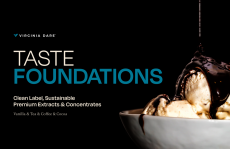New look ingredients labels highlight allergens
rules on food allergen labelling in the EU block face similar
adjustments in the US as the Senate clears new allergen laws this
week, writes Lindsey Partos.
Driven by the rising tide of food allergies, the new food label legislation, still to be cleared by the House of Representatives before becoming law, would mean a tougher time for the labelling of ingredients that are potential food allergens, namely milk, eggs, fish, shellfish, tree nuts, wheat, peanuts and soybeans.
"The new labeling legislation will ensure that the ingredients are understandable to the average consumer, and not just scientists," said US campaigning group The Food Allergy & Anaphylaxis Network (FAAN).
Manufacturers have been criticised for not providing enough ingredient data on food labels, leading to reactions in allergen-sensitive consumers. But the industry attests that it has taken a leading role in providing the right information.
"In 2001, the National Food Processors Association (NFPA) and the Food Allergy Issues Alliance built guidelines to help food processors diligently inform food-allergic consumers," said the NFPA, the voice of the $500 billion food processing industry.
Speaking from the industry body this week, Tamara Somerville, senior vice president of government affairs said of the proposed rules : "It is our hope that as this legislation continues to move through the process, further modification will make it more functional for industry and consumers alike."
If passed by the House of Representatives, The Food Allergen Labeling and Consumer Protection Act (FALCPA), would take effect from 1 January, 2006 and would include spices, flavourings, colourings and incidental additives that contain a major food allergen.
As it stands, the legislation would require food manufacturers to identify a major allergen - using common names - in one of three ways: list the allergen on the ingredient list; use the word "contains" followed by the name of the major food allergen, printed at the end of the ingredient list or next to it; use a statement in brackets to clarify technical ingredient terms. For example: casein (milk) or whey (milk).
Pressure on industry and Congress to amend the rules on food allergens has increased in parallel to the rising tide of food allergies. FAAN estimates that nearly 600,000 children are now affected by peanut allergy - about 1 in every 125 children.
According to the advocacy group, allergies to peanuts are responsible for nearly 100 deaths and 15,000 visits to emergency rooms - about half the deaths and emergency room visits caused by all food allergies - each year.
In Europe food manufacturers are tackling the small print for new rules slated for 2005 passed by the European Commission last November amending Council Directive 2003/89/EC, amending Directive 2000/13/EC . This extends the requirement for ingredient listing, for pre-packaged foods, including alcoholic drinks, and aims to help those with food allergies to identify ingredients they need to avoid.
The Directive defines a list of 12 allergens as well as deleting the '25 per cent rule', whereby individual ingredients of a compound ingredient making up less than 25 per cent of the finished product currently do not have to be listed.
According to European allergy associations 8 per cent of children and 3 per cent of adults are affected in Europe by food allergies or food intolerance, with new allergens emerging on a regular basis.













